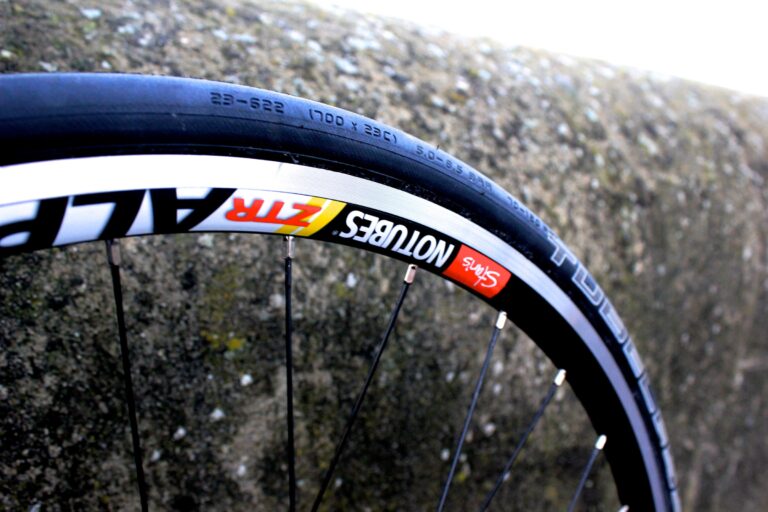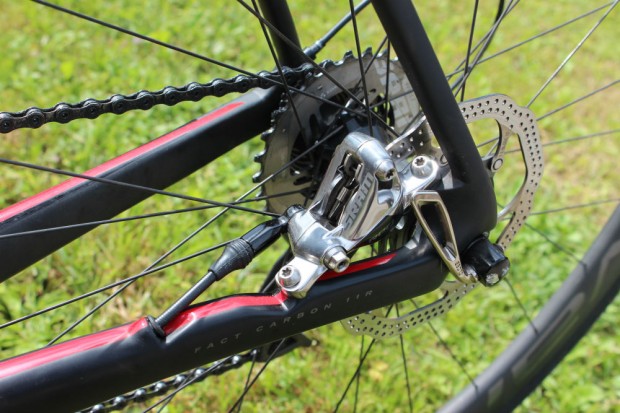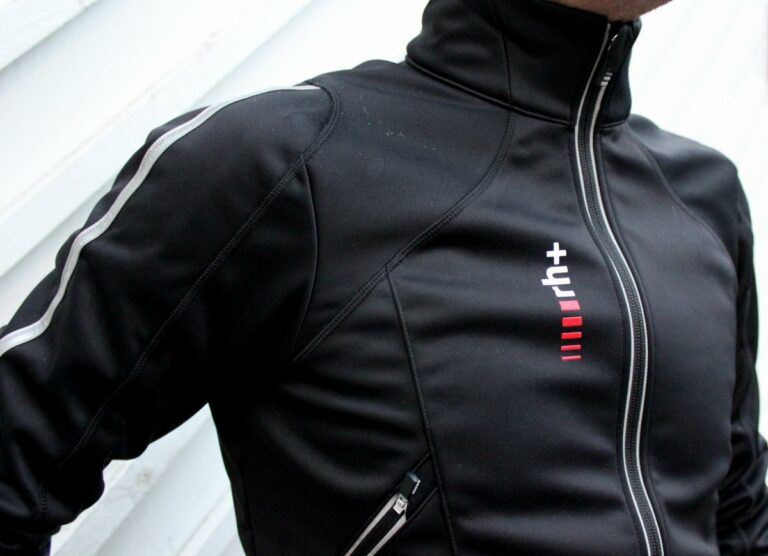Steve Domahidy is accustomed to success.
The first bike he designed “from the ground up” won the bike of the year award from a major American mountain bike magazine. The Factor Vis Vires, his first road bike, collected an iF GOLD Award at this year’s Eurobike show.
With the radical Vis Vires currently on test at RoadCyclingUK, it seemed apt to question Domahidy, an engineer whose 25 years experience in the bicycle industry has taken mountain bikes as well as road, on a range of issues shaping bicycle design, including UCI regulation, and trends ranging from integration to hydraulic disc brakes for road bikes.
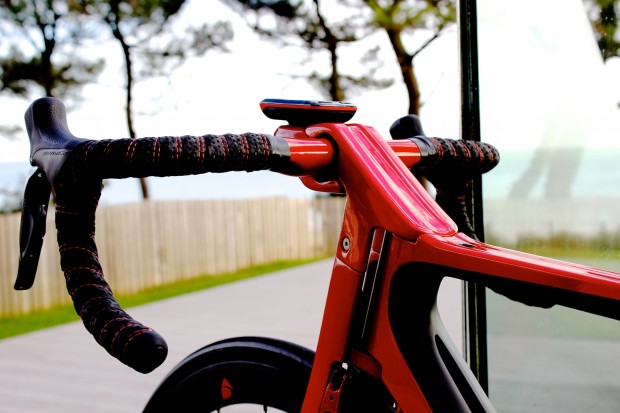
Trail to tarmac
Before joining Factor, a British company owned by bf1systems, a high-tech firm working in the upper echelons of motorsport, Domahidy co-founded Niner Bikes, which swiftly established an enviable reputation in the mountain biking world, having nailed its colours immediately – and solely – to the 29” wheel standard.
Wheel size is the latest and perhaps most obvious of a dizzying range of technological developments to beguile the fat-tyred fraternity. A graph charting the trajectory of mountain bike development from its origins around 25 years ago would represent a profile to rival an Alpine col. A similar graph to chart the development of road bikes would, one imagines, describe a far more gentle curve.
Domahidy ascribes the disparity to two phenomena: the accelerated development at the genesis of any new sport (“The suspension bikes of the 1990s were all guess work. Nobody really knew what they were doing”) and a tightening of constraints in the mid-1990s on the type of road bikes that could be used in competition. “A lot of the creativity was stifled a little bit by the UCI and their rules and regulations.”
Regulation vs. creativity
The UCI and its regulations account for a large part of our conversation. The Vis Vires, notably, failed to gain certification from cycling’s world governing body, with an issue concerning the fork preventing the award of the coveted stamp, according to Domahidy.
Domahidy and Factor’s decision to continue with production of the Vis Vires represents a potentially significant development. Together, they have decided to accept the commercial penalty of producing a machine that cannot be used in competition, and of being unable to supply a professional team (Domahidy says he had planned to have a Tour team within three years) to build the bike they wanted.
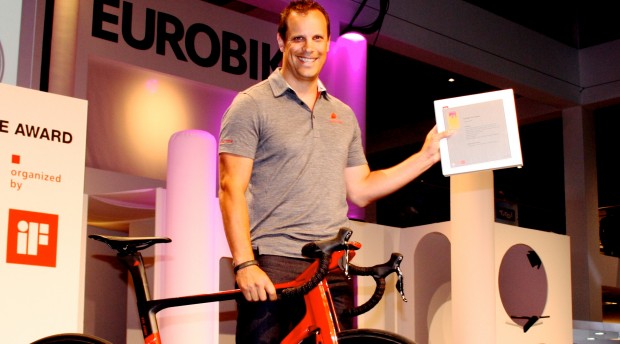
“At the end of the day, we didn’t get to put a UCI sticker on our bike which is disappointing for sure, but we did with the Vis Vires what we wanted to do,” he concludes. “We did try to stay within the confines of the UCI, but ultimately we’d rather build an amazing machine than a UCI compliant bike.”
We did try to stay within the confines of the UCI, but ultimately we’d rather build an amazing machine than a UCI compliant bike
He says he wants to continue to work with the UCI, and understands why strict regulation was introduced in the mid to late 1990s, when radical experiments with design were conducted without a concomitant commitment to safety standards – and before carbon became de rigueur. Now, following the introduction of CEN testing standards, and sophisticated computer modeling techniques that offer a detailed understanding of the stresses placed on carbon frames, Domahidy believes the guidelines could be relaxed. He is not holding his breath, however. “I think in the immediate future, the UCI will be too busy making sure that people are confident the sport is clean.”
Greater pressure might be placed on the regulators if bikes designed outside of the UCI rule book gain commercial success, he belives. “As the Vis Vires starts to gain some traction in the market place, and the fact that it’s not UCI compliant, I think the spotlight will be shone on those rules a little more.
“I think people have forgotten that bicycle design has started to stagnate a little in the road bike industry. I feel like people are not demanding new stuff. The traditional stuff is still selling. The motivation for bike companies to push the boundaries is pretty low right now, I think.”
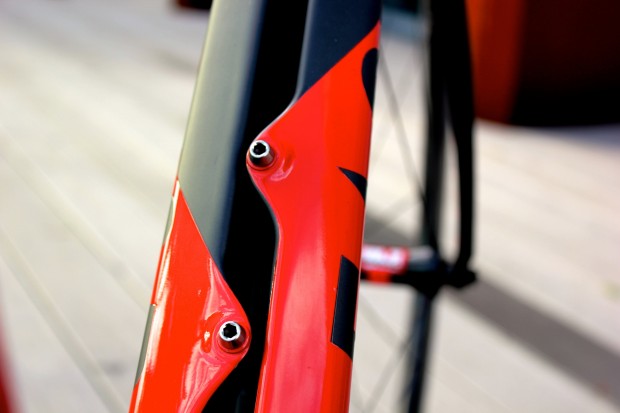
With the commercial imperative a fuel for creativity and innovation, Domahidy says the similarity among the designs of so many manufacturers is difficult to understand. “That’s ironic because they’re all biting off the same pie. There are hundreds and hundreds of brands that are all vying for the same customer and the only way you can make yourself a presence in that kind of environment is by doing something outside of the rule book.”
People have forgotten that bicycle design has started to stagnate a little in the road bike industry. People are not demanding new stuff. The traditional stuff is still selling. The motivation for bike companies to push the boundaries is pretty low right now
Are the creative opportunities offered to a designer working in the road bike sphere less than those producing mountain bikes? Domahidy, with his background at Niner and his latest project with Factor, seems like the right man to ask. “Only if you’re trying to stay within the confines of the UCI,” he answers. “If you’re not trying to stay within the confines of the UCI, I believe that we haven’t gone far enough.” The conservative approach adopted by triathlon bikes, machines beyond the scope of UCI regulation, surprises him. “If you’re going to throw the UCI book out the window, why does your bike still look like a traditional time trial bike?”
F1 technology: the ‘x’ Factor
Factor’s parent company is Bf1 systems, a company, as its name suggests, working in the upper echelons of motorsport. Domahidy makes little secret of his admiration for Bf1’s engineers, or its engineering resources; the latter he says beyond the realms of even the largest bicycle manufacturers. He enthuses about the company’s Finite Element Analysis tools (FEA), and says those in the cycle industry are rudimentary by comparison.
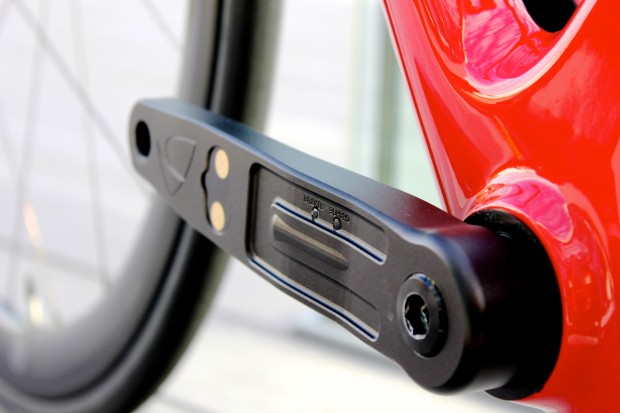
The in-house Power Crank, a £2,000 optional extra for the Vis Vires, is another highly sophisticated offering. Still at the prototype stage, when released later this year it will sample power measurements from the left and right crank arms at a rate significantly faster than the ANT+ protocol with which it communicates with the supplied Garmin EDGE 810 computer, allowing power output to be sampled through the entire pedal stroke and to be analysed in real time and post-ride. Domahidy describes the crank as fourth generation, one that Factor’s engineers, specialists in strain gauge technology, have been working on for five years.
Factor made a high-profile, if uncelebrated debut in the bicycle injury with their 001, a machine that spawned a special edition for luxury car manufacturer, Aston Martin. Domahidy said a combination of the 001’s sophisticated engineering, but lack of rideability caused him to mentally bookmark Factor, and to seize the chance to work with them if the opportunity presented itself. The radical Vis Vires, two years in development, is the result. “It’s a pleasure to work at this level. If there’s ever a problem, there’s resources that, from an engineering standpoint, 99.9 per cent of bike companies on the planet don’t have, including the big ones.”
Disc brakes: cool enough for road bikes?
The irony that Factor’s Vis Vires, with its radical solutions to the challenges of managing air flow and its sophisticated power crank, has been denied the UCI accreditation bestowed upon arguably less advanced machinery is not lost upon Domahidy.
Shimano playfully highlighted the unintended consequence of UCI regulation – placing developments in the hands of amateurs that are denied to professional riders – in an advertising campaign to promote its new hydraulic disc brake, in which four riders from cycling’s elite UCI WorldTour stare wistfully through a shop window pane at the new equipment.
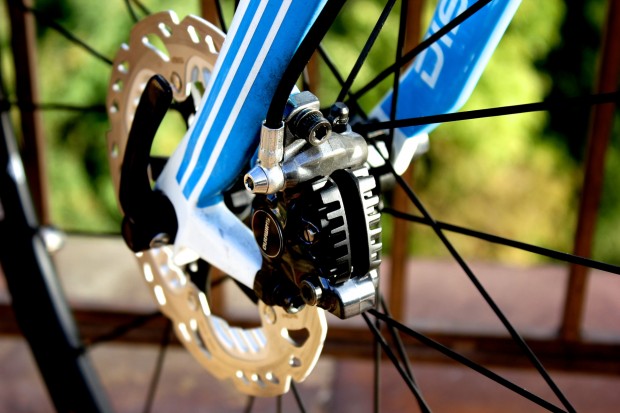
Domahidy, with his background in mountain bike design, seems ideally placed to comment on the technical challenges of fitting hydraulic disc brakes to road bikes. “I would love for disc brakes to be successful on road bikes,” he says. “Ultimately, if you built them for a road bike you could do some pretty cool stuff.”
While acknowledging the deficiencies of rim brakes, Domahidy remains unconvinced of the merits of adapted mountain bike systems, with cooling the greatest hurdle to overcome. Boil the brake fluid, he argues, and the braking system is useless. Off-road riders are more prepared to carry the weight penalty of larger rotors, and therefore reap the benefits of a greater surface areas for cooling, he argues. Additionally, braking patterns for the two disciplines differ also, he says. “You’re on and off the brakes and rotors have the ability to cool down.”
I would love for disc brakes to be successful on road bikes. Ultimately, if you built them for a road bike you could do some pretty cool stuff
Domahidy says that for certain sectors of the road bike market, hydraulic disc brakes are ideal, notably for touring bikes. For racing bikes, however, he remains unconvinced by current systems, while admitting to having “some pretty significant ideas in that department”.
The Factor Vis Vires is a visually stunning machine. Its radical design, and the technologies used in its manufacture make it a machine worthy of consideration, but the influence it may or may not come to exert in the market – specifically, whether it inspires other designers to work outside the UCI rule book – will perhaps be more significant than any commercial impact.

